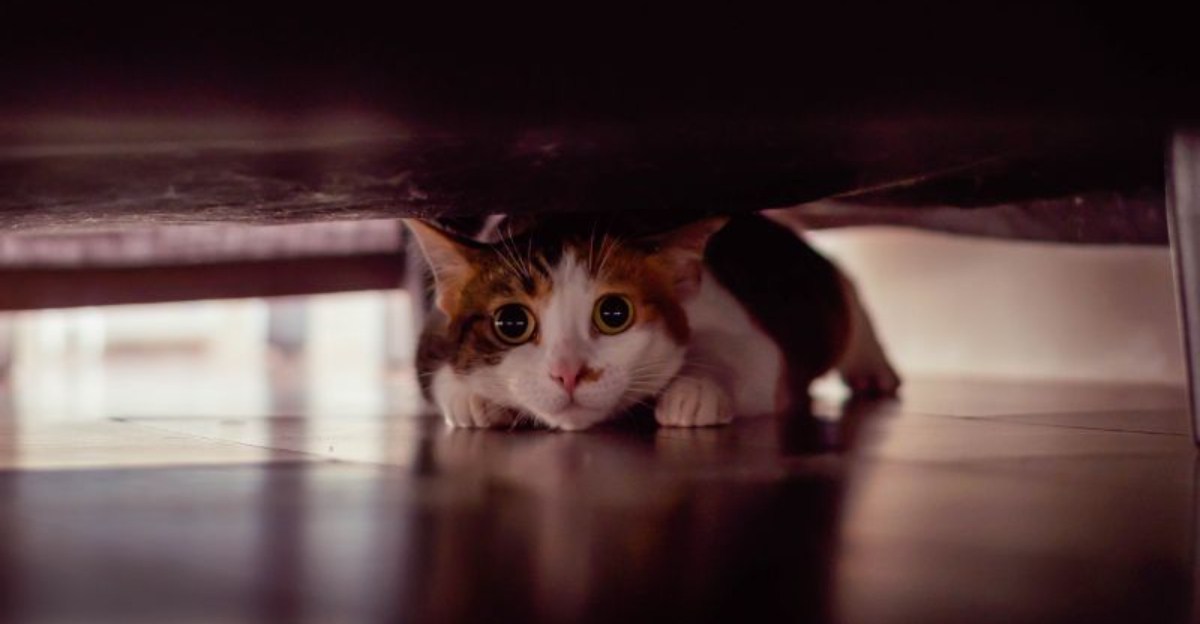📖 Table of Content:
Cats are known for their enigmatic nature, often concealing signs of distress or illness. This instinct, inherited from their wild ancestors, can make it difficult for pet owners to detect health problems early. Understanding the subtle changes in a cat’s behavior and appearance can be crucial for timely intervention and care. In this blog post, we’ll explore seven key early warning signs that your feline friend might be unwell. Recognizing these signs can help ensure your cat receives the necessary care and attention to maintain a healthy and happy life.
1. Changes in Appetite or Thirst
Have you ever noticed your cat staring blankly at its water bowl? Such changes in thirst or appetite can be signals of underlying health issues. A sudden increase in drinking might suggest diabetes or kidney problems, while a decrease could indicate dental discomfort. Cats are creatures of habit, and any deviation from their normal eating routines should not be overlooked. Often, these shifts are a cat’s subtle cry for help, hinting at conditions like hyperthyroidism or gastrointestinal distress. Observant owners who notice these changes early can seek veterinary advice and ensure their furry companion remains healthy and content.
2. Weight Fluctuations
Spotting a chubby or overly skinny cat on the vet’s scale might raise eyebrows. Such weight fluctuations are more than cosmetic concerns—they can be indicators of health issues. Unexplained weight loss in cats, especially those previously overweight, might point to metabolic conditions like diabetes or hyperthyroidism. Conversely, sudden weight gain can pave the way for obesity-related complications. The scale doesn’t lie, and neither should we ignore what it tells us about our pets. Regular weight checks and consultations can help in catching these issues early, ensuring a healthier, happier feline.
3. Behavioral Changes
A once sociable feline suddenly becoming aloof or aggressive might signal distress. Behavioral changes, like increased hiding or aggression, often indicate discomfort or illness. Cats communicate through behavior, and a shift in their usual demeanor can be a telltale sign something’s amiss. Some might become clingy, seeking constant attention as if whispering their woes. Such changes should never be brushed off, as they can point to underlying issues requiring attention. Observing these behaviors and seeking professional advice ensures your cat receives the care it needs, maintaining its well-being and your peace of mind.
4. Grooming Habits
A cat’s reflection of health is often visible in its coat. When grooming habits change, it can speak volumes about their health. A cat that grooms excessively might be battling skin irritations or allergies. Conversely, a disheveled appearance with unkempt fur may indicate they are feeling unwell, possibly due to obesity or arthritis. Such changes in grooming tell tales of discomfort or illness. By paying close attention to these shifts in behavior, owners can catch potential issues early. This vigilance ensures not only a cat’s beauty but also its overall health and happiness.
5. Litter Box Issues
The litter box is more than a bathroom; it’s a health indicator. Cats who suddenly avoid it or exhibit unusual behaviors around it might be sending distress signals. Urinating outside the box, straining, or blood-tinged waste can indicate urinary tract issues or kidney disease. These signs, subtle yet significant, require immediate attention. By monitoring and addressing these changes promptly, pet owners can prevent minor issues from escalating into major health concerns. The litter box tells a silent story, and it’s up to us to listen and act for our cat’s welfare.
6. Breathing Difficulties
Cats are known for their quiet grace, but what if their breath tells a different story? Mouth breathing or shallow breaths could be a symptom of respiratory issues. Cats may also display signs like sneezing or coughing, which can point to infections or allergies. Such symptoms require prompt investigation to prevent escalation into severe conditions. Observing your cat for these respiratory changes is crucial, as early intervention can lead to effective treatment. Remember, a cat’s purr is soothing, but its breath should be silent and untroubled, a testament to its health and happiness.
7. Eye and Nose Discharge
The eyes may be windows to the soul, but for cats, they’re also indicators of health. Eye or nose discharge can suggest infections or allergies, requiring immediate attention. Cats might also show signs like drooling or bad breath, hinting at dental issues or digestive distress. Such symptoms, if left unchecked, can lead to more serious health concerns. Regular check-ups and keen observation help spot these signs early, ensuring timely care. A cat’s bright eyes and clear nose are not just features of beauty but markers of its well-being and vitality.







